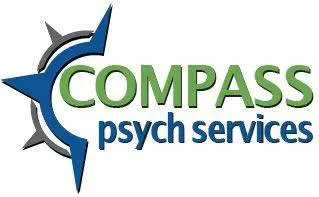Reunification Therapy: A Guide for Parents
What Is Reunification Therapy?
Reunification therapy is a structured process designed to help repair the relationship between a child and a parent after separation or divorce when a child refuses to see one parent.
Key Terms to Know:
Visitation Refusal – When a child refuses to see or spend time with one parent, often due to influence from the other parent.
Aligned Parent – The parent with whom the child prefers to stay, sometimes influenced by past experiences or emotional factors.
Rejected Parent – The parent whom the child refuses to see or has become distant from.
Why Is Reunification Therapy Different?
Unlike traditional therapy, which focuses on validating a child’s emotions, reunification therapy works to rebuild the parent-child relationship. This may involve challenging a child’s negative beliefs about the rejected parent.
Important Points:
- Children experiencing alienation often forget positive past experiences with the rejected parent.
- Waiting for a child to “be ready” to see a parent usually leads to permanent estrangement.
- Court involvement is often necessary to ensure cooperation from all family members.
The Reunification Therapy Process
Reunification therapy is divided into three main phases:
Phase 1: Assessment and Preparation
1. Initial Assessment
Goal: Understand the family dynamics and reasons behind visitation refusal.
Steps:
- Separate sessions with each parent and the child.
- Evaluate the child’s attitude and emotional state.
- Identify any mental health concerns (e.g., anxiety, trauma).
- Determine the severity of alienation (mild, moderate, severe).
Barriers:
- Resistance from the aligned parent (e.g., arguments about schedules, finances).
- A child’s busy schedule interfering with therapy.
Example: A 10-year-old refuses to visit their dad, claiming they “never had fun with him.” However, past photos and family videos show otherwise. Therapy helps the child recognize these inconsistencies.
2. Creating a Treatment Plan
Goal: Develop clear, structured goals for each family member.
Steps:
- Set specific objectives, such as improving communication and rebuilding trust.
- Establish expectations for both parents.
- Choose therapy techniques like cognitive-behavioral therapy or family therapy.
Barriers:
- One parent speaking negatively about the other.
- Ignoring court-ordered visitation schedules.
3. Educating the Family
Goal: Teach parents and children about the effects of alienation.
Steps:
- Explain how alienation harms a child’s emotional well-being.
- Show parents how to create a supportive environment.
- Help the aligned parent understand the damage of keeping the child from the rejected parent.
Example: A therapist might use a puzzle analogy, showing that both parents play a role in shaping the child’s emotional development.
Phase 2: Rebuilding the Parent-Child Relationship
4. Individual Therapy (If Needed)
Goal: Address personal issues affecting reunification.
Steps:
- Help the child express fears and concerns.
- Teach the rejected parent patience and emotional regulation.
- Encourage the aligned parent to support reunification.
Barrier: Parents struggling with their own self-doubt about parenting.
5. Joint Sessions (Child & Rejected Parent)
Goal: Create positive, low-pressure interactions.
Steps:
- Start with short, structured meetings in a therapist’s office.
- Encourage conversations about neutral topics (e.g., favorite books, past fun activities).
- Increase interaction time as trust builds.
Barriers:
- The rejected parent refusing to apologize or acknowledge past mistakes.
- The aligned parent interfering with scheduling.
Example: At first, the child meets the rejected parent for 20 minutes in the therapist’s office. Later, they go to a park together for an hour.
6. Parent Coaching
Goal: Help both parents reduce conflict and co-parent effectively.
Steps:
- Teach healthy communication skills.
- Encourage the aligned parent to stop making negative remarks.
- Help the rejected parent respond to the child with patience and understanding.
Barriers:
- The child knowing too much about court battles.
- Parents using the child as a messenger between them.
Phase 3: Reintegrating the Family
7. Co-Parenting Therapy
Goal: Create a healthy family dynamic.
Steps:
- Bring both parents and the child together for discussions.
- Address feelings of mistrust and resentment.
- Establish positive routines and traditions.
8. Monitoring Progress
Goal: Adjust therapy as needed.
Steps:
- Track improvements in the parent-child relationship.
- Modify goals based on progress.
- Offer extra support if necessary.
Barrier: Backsliding—if one parent continues to undermine reunification.
9. Increasing Unsupervised Visits
Goal: Build trust and independence in the parent-child relationship.
Steps:
- Start with short, supervised visits.
- Gradually allow longer, unsupervised interactions.
- Ensure the child feels safe and comfortable.
Example: A child and rejected parent meet at a restaurant with the therapist present. Later, they visit a zoo together without supervision.
10. Closure and Aftercare
Goal: Ensure the family can maintain a positive relationship without therapy.
Steps:
- Summarize progress and improvements.
- Develop a plan for handling future conflicts.
- Recommend occasional check-ins or family therapy if needed.
Barrier: Without court support, families often get stuck in therapy and don’t move forward.
Final Thoughts
Reunification therapy is challenging but essential for repairing damaged parent-child relationships. Success depends on:
- Parental cooperation – Both parents must follow the plan and avoid negative behaviors.
- Consistent therapy – Regular sessions help reinforce progress.
- Court support – Court involvement ensures accountability and keeps therapy on track.
By following these steps, families can rebuild trust, create new positive memories, and develop a healthier dynamic for the future.
